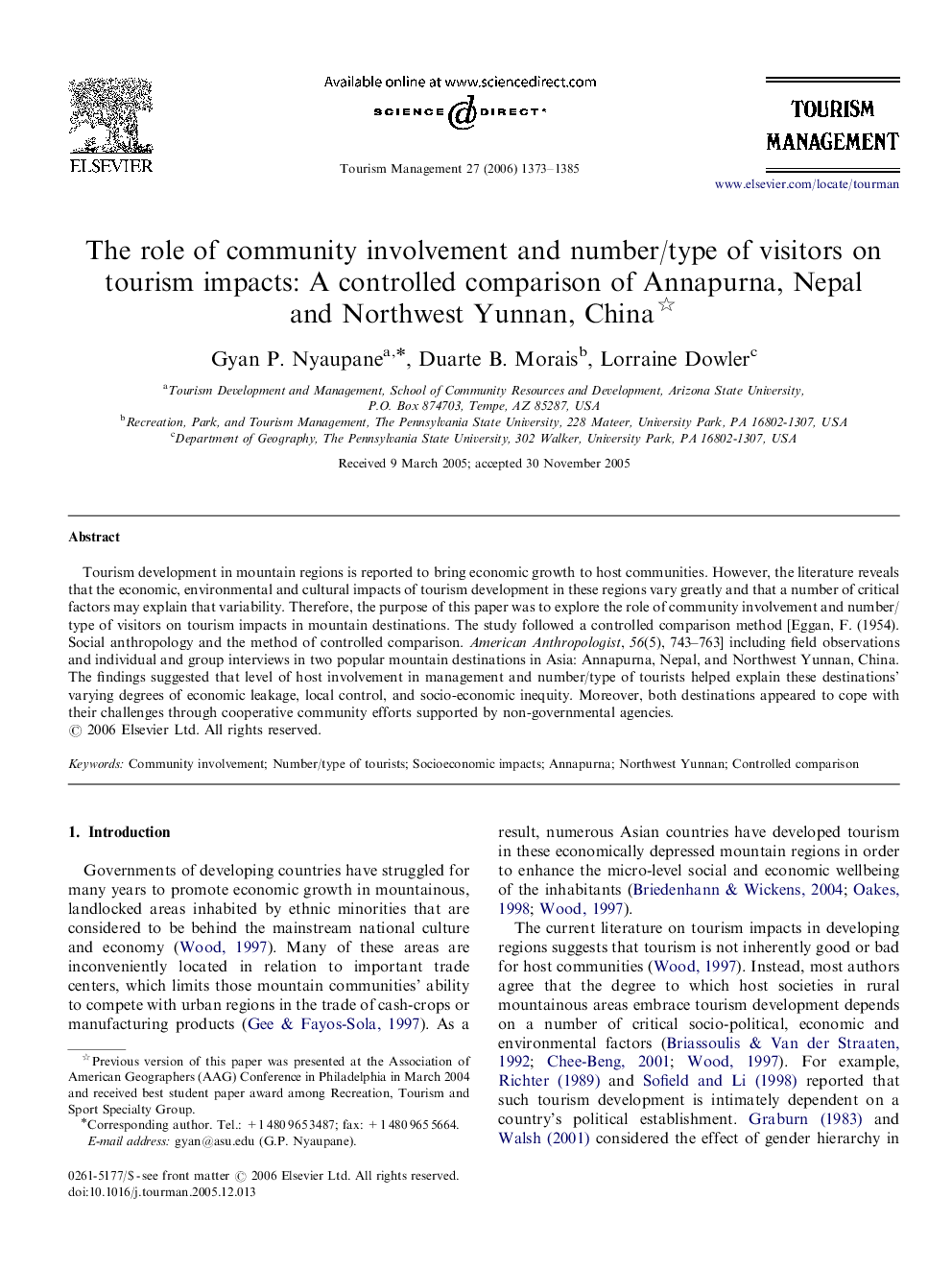| Article ID | Journal | Published Year | Pages | File Type |
|---|---|---|---|---|
| 1013269 | Tourism Management | 2006 | 13 Pages |
Tourism development in mountain regions is reported to bring economic growth to host communities. However, the literature reveals that the economic, environmental and cultural impacts of tourism development in these regions vary greatly and that a number of critical factors may explain that variability. Therefore, the purpose of this paper was to explore the role of community involvement and number/type of visitors on tourism impacts in mountain destinations. The study followed a controlled comparison method [Eggan, F. (1954). Social anthropology and the method of controlled comparison. American Anthropologist, 56(5), 743–763] including field observations and individual and group interviews in two popular mountain destinations in Asia: Annapurna, Nepal, and Northwest Yunnan, China. The findings suggested that level of host involvement in management and number/type of tourists helped explain these destinations’ varying degrees of economic leakage, local control, and socio-economic inequity. Moreover, both destinations appeared to cope with their challenges through cooperative community efforts supported by non-governmental agencies.
